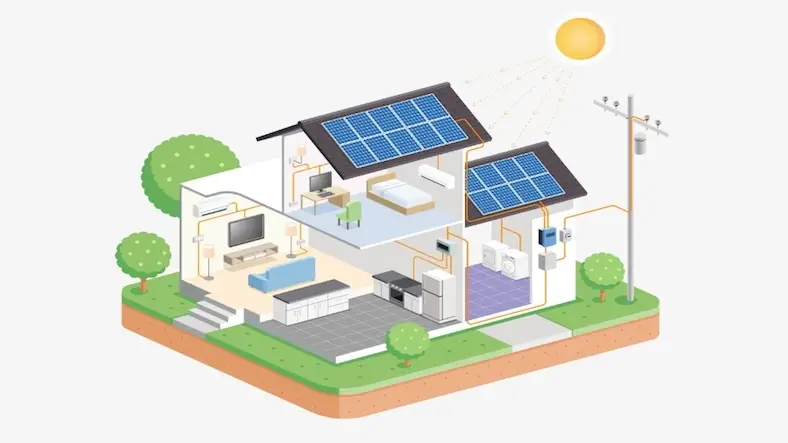Setting up a solar power system for a family of four in India involves several steps. Please note that the costs provided are approximate and can vary based on factors like location, system size, quality of components and labor costs.
Additionally, government incentives and rebates can affect the final cost.
Step-by-Step Guide:
Step 1: Assess Your Energy Needs
- Determine Your Energy Consumption: Review your monthly electricity bills to understand how much energy your household consumes. This will help you size your solar panel system appropriately.
Step 2: Evaluate Solar Potential
- Check Sunlight Availability: Assess how much sunlight your location receives throughout the year. Solar panels should be installed where they can receive direct sunlight for most of the day.
Step 3: Obtain Necessary Permits and Approvals
- Check Local Regulations: Research and comply with local regulations, permits and building codes for solar installations. You may need to obtain permits from your local municipality.
Step 4: Budget and Financing
- Set a Budget: Determine how much you're willing to invest in your solar power system. The cost will depend on factors like system size, location and quality of components.
- Explore Financing Options: Consider whether you'll pay for the system upfront, finance it, or enter a Power Purchase Agreement (PPA) or lease arrangement. Each has its pros and cons.
Step 5: Choose the Right Solar Panel System
- Select Solar Panels: Choose high-quality solar panels from reputable manufacturers. Consider factors like efficiency, durability and warranties.
- Inverter Selection: Select an inverter that converts DC electricity generated by the panels into AC electricity that can be used in your home.
- Battery Storage (Optional): Decide if you want to include a battery storage system to store excess energy for use during periods of low sunlight.
Step 6: Find a Reliable Solar Installer
- Research Solar Installers: Seek quotes and information from multiple solar installers in your area. Choose a reputable and experienced installer with good customer reviews.
Step 7: Site Assessment and Design
- Site Visit: The installer will conduct a site assessment to determine the best location for the panels and check for any potential obstructions.
- System Design: The installer will create a detailed design plan, including the number and placement of panels, inverter location and wiring.
Step 8: Installation
- Panel Installation: The solar panels and inverter are installed on your property. This process typically takes a few days.
- Electrical Work: The installer will connect the panels to your electrical system and grid.
Step 9: Inspections and Approvals
- Local Inspection: The local authorities will inspect the system to ensure it complies with building codes and safety standards.
Step 10: Connection to the Grid (if applicable)
- Grid Connection: If you're in a grid-tied system, your solar panels will be connected to the grid. This allows you to sell excess energy back to the grid.
Step 11: Enjoy the Benefits
- Monitor and Maintain: Keep an eye on your system's performance and schedule regular maintenance to ensure it operates efficiently.
Cost Estimation (in INR):
The cost of a solar power system in India can vary widely based on factors like location, system size, quality of components and labor costs. A typical residential solar power system in India might cost anywhere from ₹1,00,000 to ₹5,00,000 before incentives and rebates.
Please note that this is a general estimate and costs can change. To get accurate pricing, consult with local solar installers or use online solar cost calculators that take into account current market conditions and local incentives. Additionally, consider government schemes and subsidies for solar installations that may be available in your state.
Thanks for reading the article, for more Science and Technology related articles read and subscribe to peoples blog articles.















